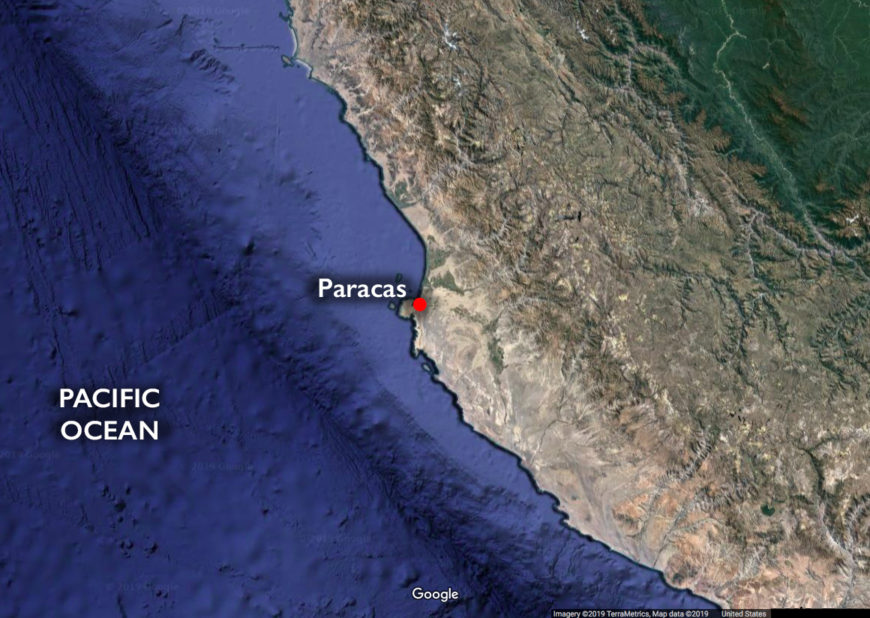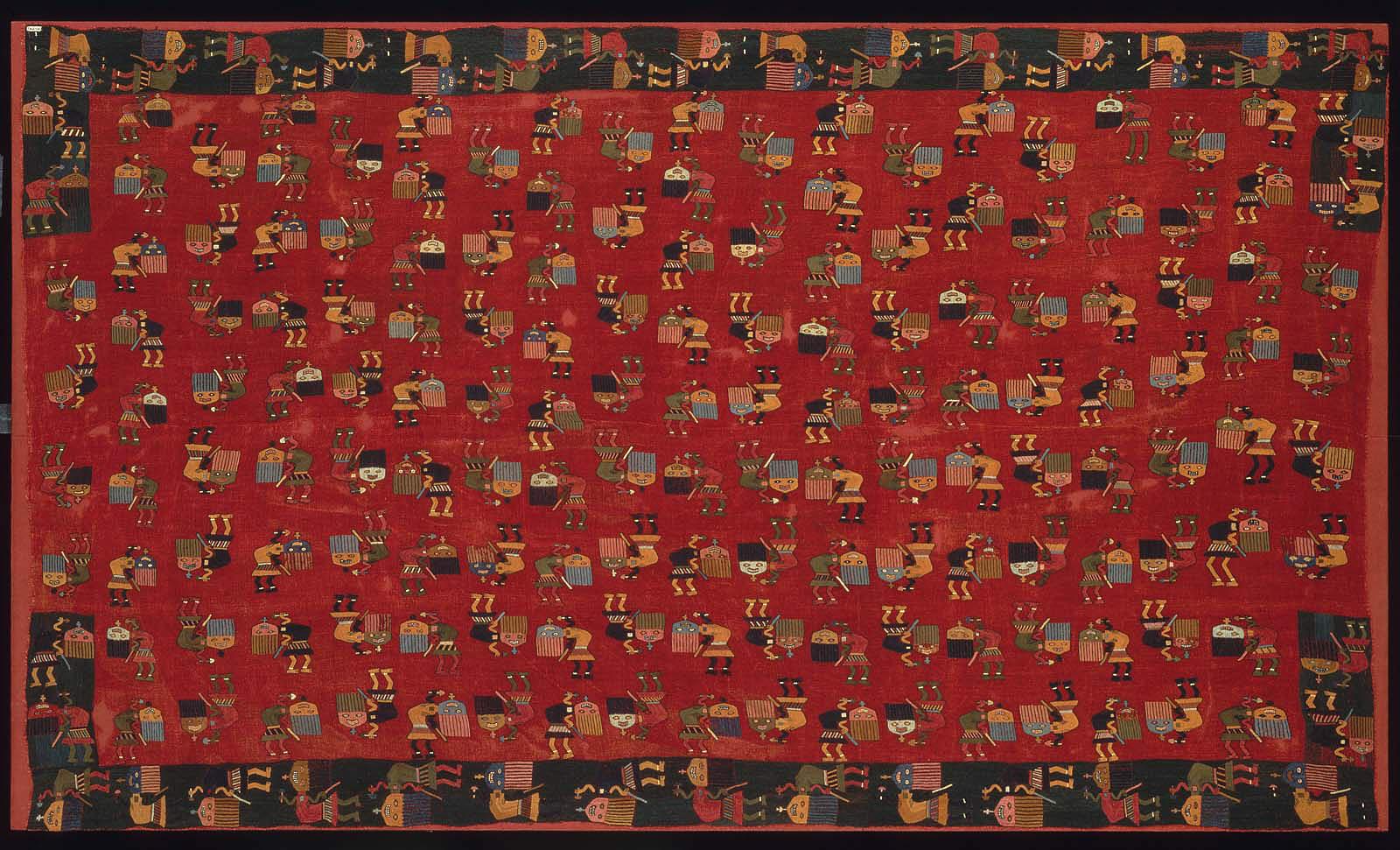
Color Block Mantle, Peruvian (Paracas), first century C.E., wool, plain weave, embroidered with wool, 142 x 241 cm (Museum of Fine Arts, Boston)
A Desert Necropolis in Peru
At around the same time that Chavín culture flourished in the highlands, the Paracas peninsula on the southern coast of Peru witnessed the rise of a new society of farmers and fishermen. The Paracas culture (c. 700 B.C.E.–200 C.E.) is best known not for its monumental architecture, but for what lay buried below the ground: a necropolis of hundreds of miraculously preserved mummy bundles. The Paracas mummies were buried in two different types of burial chambers. The Paracas Cavernas (cavern) pits were small bottle-shaped shaft tombs, while the Paracas Necropolis crypts were large mausoleums fitted with masonry walls.
Located within these tombs were mummy bundles wrapped in sumptuous embroidered textiles, some reaching up to four feet in circumference. The textiles ranged in quality from rough swaths of undecorated cloth to finely embroidered mantles. Mummies were also buried with offerings of food and jewelry to accompany the deceased into the afterlife. The types of textiles and offerings associated with a mummy bundle shed light on the individual’s social status; the larger and more elaborate the bundle, the higher social standing the person held during his or her life.
Paracas textiles provide some of the most stunning examples of pre-Columbian Andean fiber art. Close examination of Paracas textiles reveals a great deal of information on the sophisticated embroidery techniques developed by Paracas artists, their system of textile production, and their belief systems.
Material
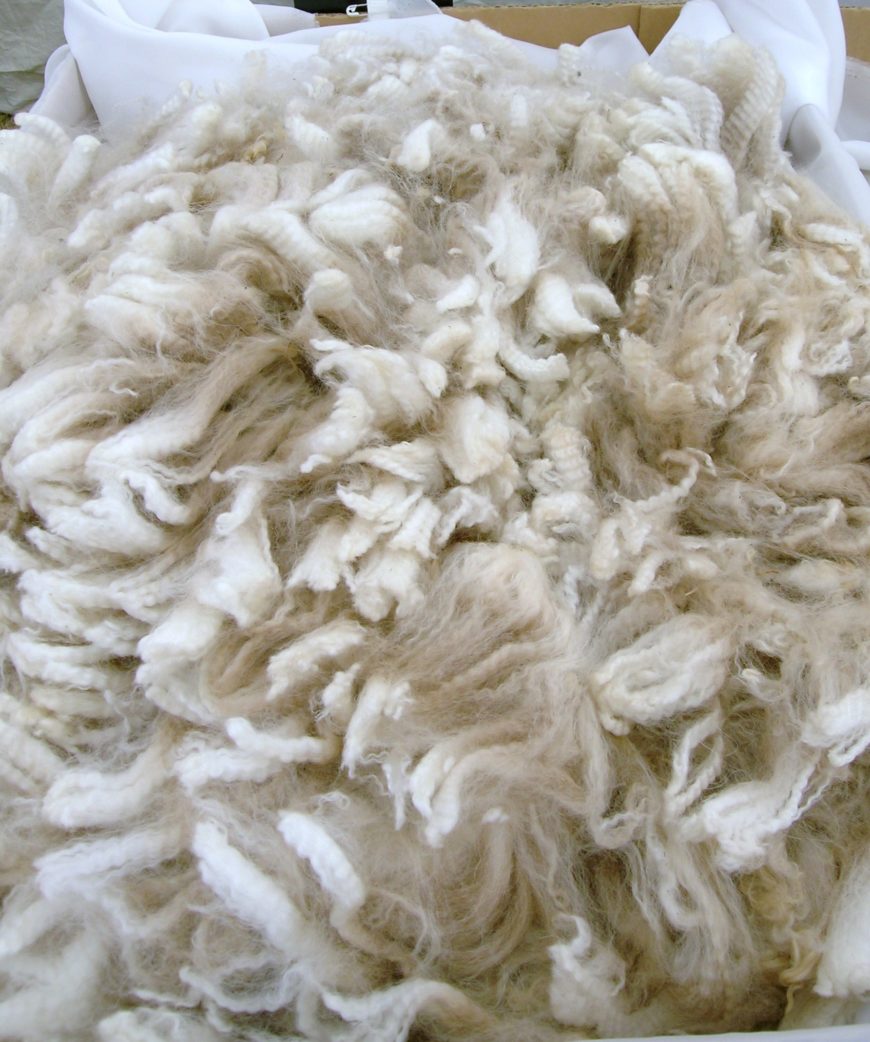
Alpaca wool (photo: Cgoodwin, CC BY-SA 3.0)
Paracas embroidered cloths were made out of cotton and camelid fibers. Cotton is a local coastal crop that would have been readily accessible to Paracas artists. Camelid (related to the camel family) fiber, on the other hand, derives from llamas, alpacas, and vicuñas indigenous to the highlands.
Paracas weavers would have procured camelid fiber through long-distance trade. Cotton would have been used for weaving the ground cloth while the silkier, high-quality camelid threads were typically used for the embroidery.
Style and techniques
Linear style
Linear Style textiles are embroidered cloths that feature repeating geometric designs. Many Linear Style textiles appear to be woven because the embroidery covers nearly the entire surface area of the ground cloth. Paracas textile specialists would embroider designs on a grid pattern instead of stitching along the contours of the design. In other words, the embroiderers would stitch each color separately in a linear fashion until the entire composition became filled in with lines. This required a great deal of planning and visualization to achieve the final product. Paracas textile specialists employed an apprentice system in which less experienced embroiderers produced designs alongside those of experts in order to mimic their designs and techniques. One single cloth could bear the work of many different hands with varying levels of expertise.
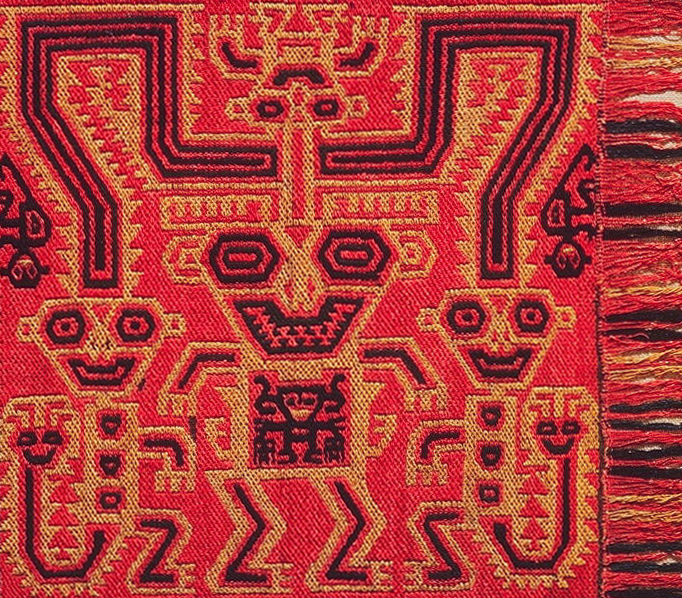
Linear Style Paracas textile, 5th–3rd century B.C.E., camelid hair and cotton (The Metropolitan Museum of Art)
The Block Color style, on the other hand, was made by stitching outlines of shapes and then filling them in with broad areas of color. Block Color style tends to be less geometric than Linear Style, and has more open spaces between motifs. Both Linear and Block Color styles were being used during the same time period.
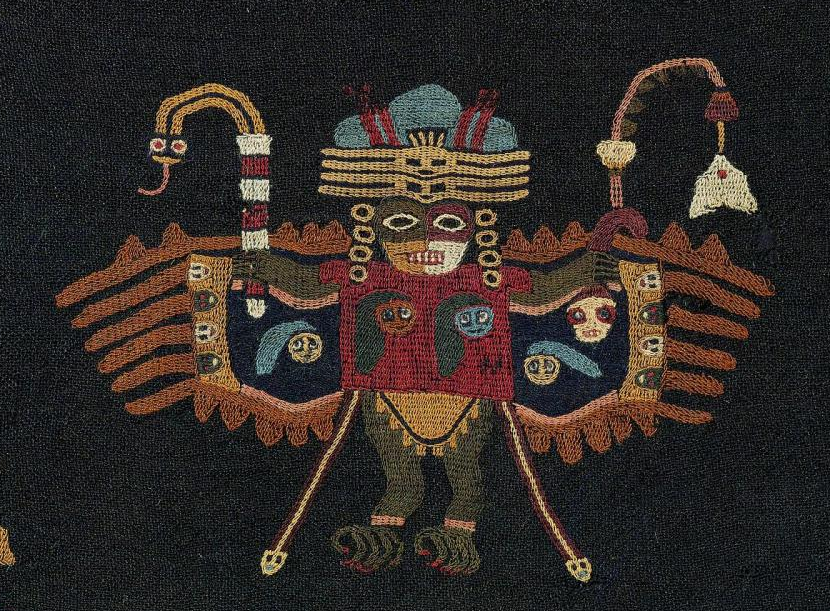
Detail of a Paracas Block Color mantle, 50–100 C.E., embroidered wool (Museum of Fine Arts, Boston)
Symbols
Felines, serpents, birds, and fish dominate the Linear Style symbolic repertoire, while human figures are added to the subject matter of Block Color textiles. Unlike what we see at Chavín, Paracas symbolism mainly consists of local wildlife, including fish, pampas cats, falcons, and hummingbirds.
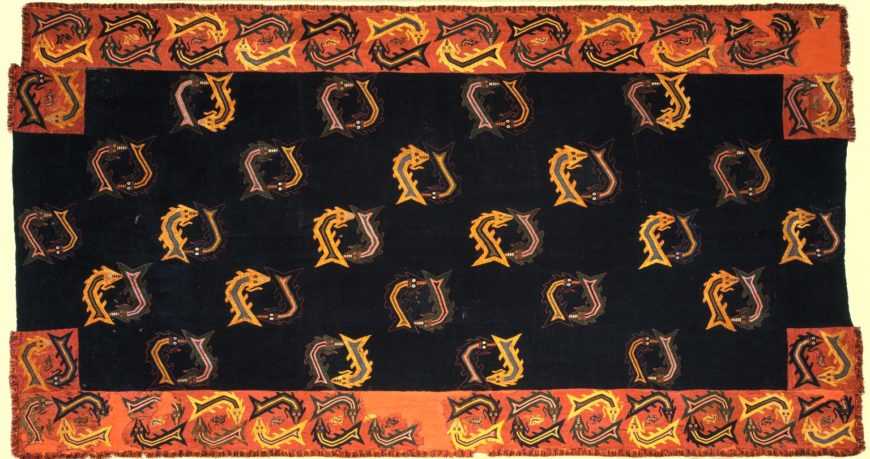
Double Fish Mantle, Block Color style, Paracas, 0-100 C.E. (The Brooklyn Museum)
In the Double Fish Mantle we see a series of paired fish transposed to one another, with each head facing the tail of the other. Art historian Mary Frame suggests that they represent sharks due to the appearance of gills behind the eyes. In the orange border, smaller sharks are enclosed within the protected space of their connected bodies, and may be a reference to fertility and reproduction. The Paracas embroiderers depicted a range of aquatic and terrestrial life in their textiles, providing a comprehensive picture of the peninsula’s thriving ecosystem.
Paracas textiles contain standardized geometric, linear representations of animal motifs. The repeating images have a rhythmic character and usually remain faithful to the pattern. The designs are dense and compact, and bear little distinction between foreground and background. In the Double Fish Mantle, the fish motifs are arranged symmetrically within the mantle, with four pairs of fish embroidered along the long edges, followed by a row of five pairs, with six pairs along the center of the mantle.
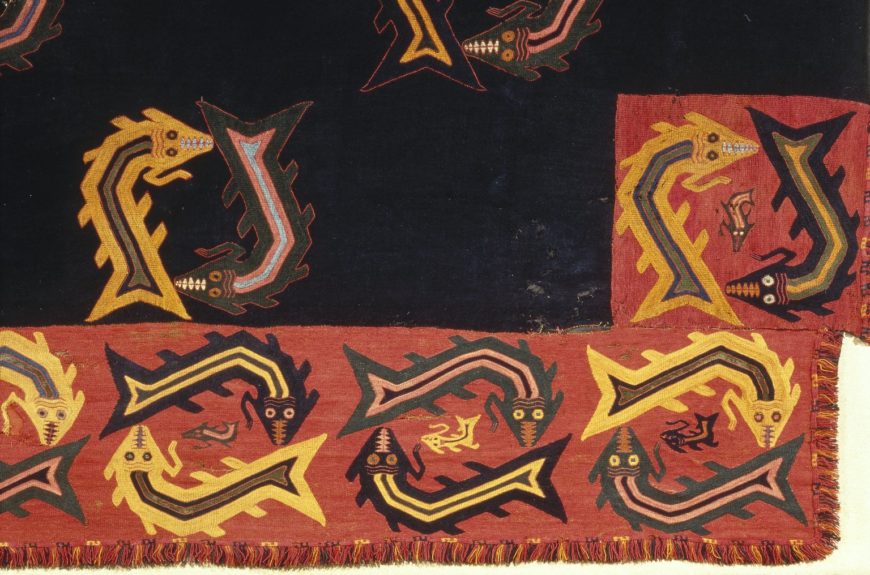
Double Fish Mantle, detail, Block Color style, Paracas, 0-100 C.E. (Brooklyn Museum)
While the number and distribution of the fish pairs conform to a set pattern, a great deal of diversity can be found in the details of the embroidery. Some are green, blue, and pink; others are black, pink, and brown, while others are yellow, blue, and brown. The specific color combinations vary across the composition and do not fit into any discernible pattern. The subtle interventions made by the embroiderers, which break the pattern through the unsystematic distribution of colors, lend the mantle a powerful visual dynamism. The orange borders of the mantle offer a pop of color and also feature a slight variation of the fish motif.
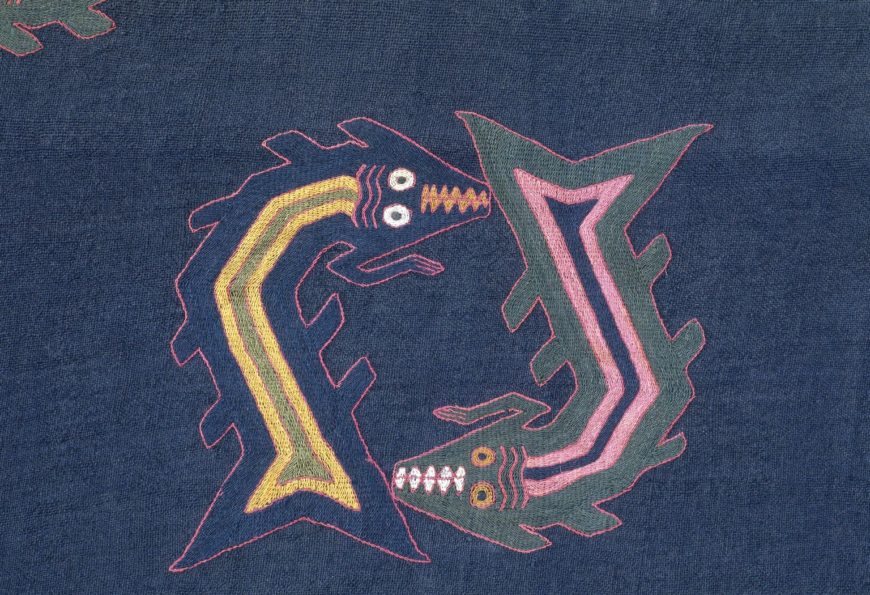
Double Fish Mantle, detail, Block Color style, Paracas, 0-100 C.E. (Brooklyn Museum)
Use
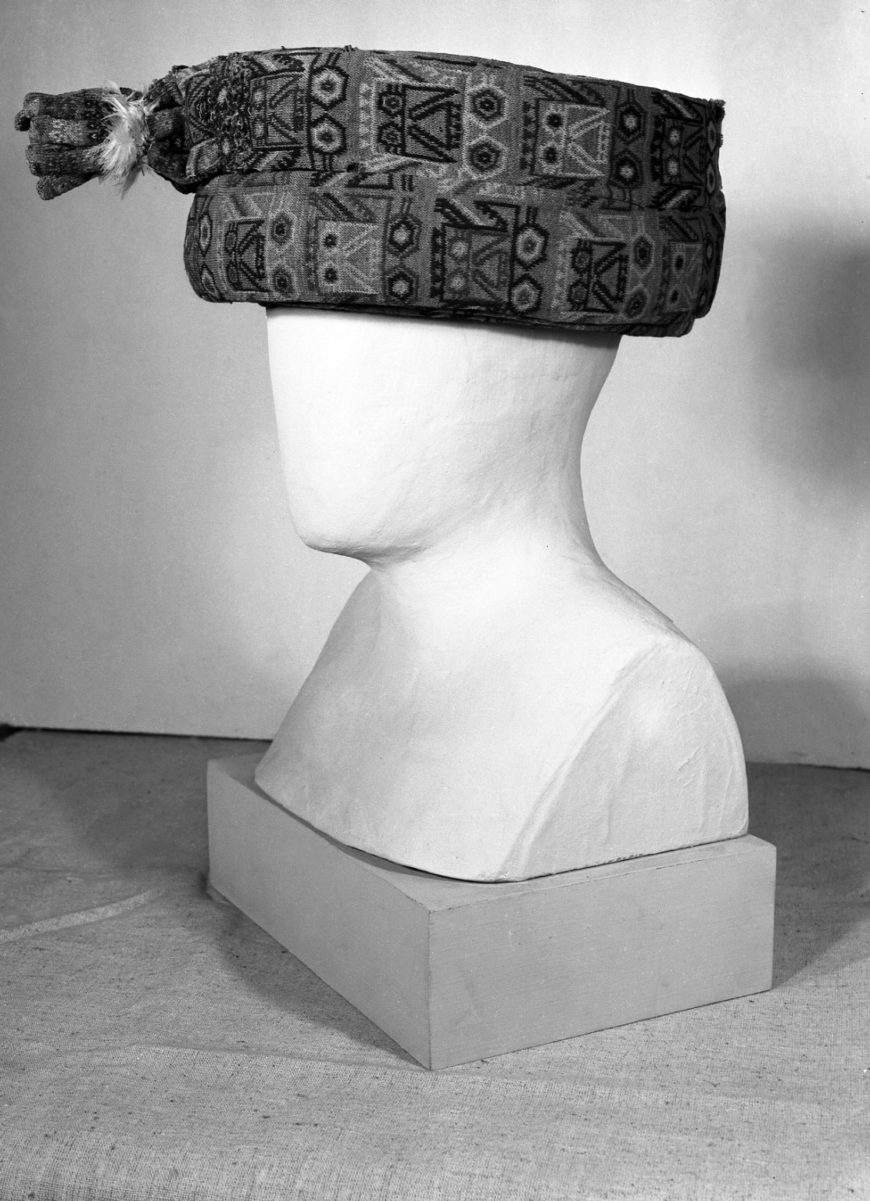
A mannequin displaying a Linear Style “turban,” 300 B.C.E–100 C.E., camelid fiber and feathers (Brooklyn Museum)
Paracas embroidery adorned a number of different types of textiles and garments. Everyday clothing such as hats, and ponchos often contained embroidered sections executed in the linear style.
The most elaborate embroideries can be found in mummy bundles. Long swaths of cloth embroidered in the linear style were wrapped around the deceased to create a bundle, some measuring up to 85 feet in length.
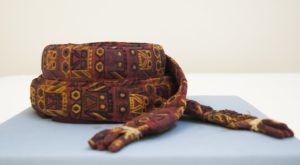
The turban seen at left (Brooklyn Museum)
Additional resources
Read more about Andean textiles at the Metropolitan Museum of Art
Rebecca R. Stone, Art of the Andes: From Chavín to Inca (London: Thames & Hudson 2012)

